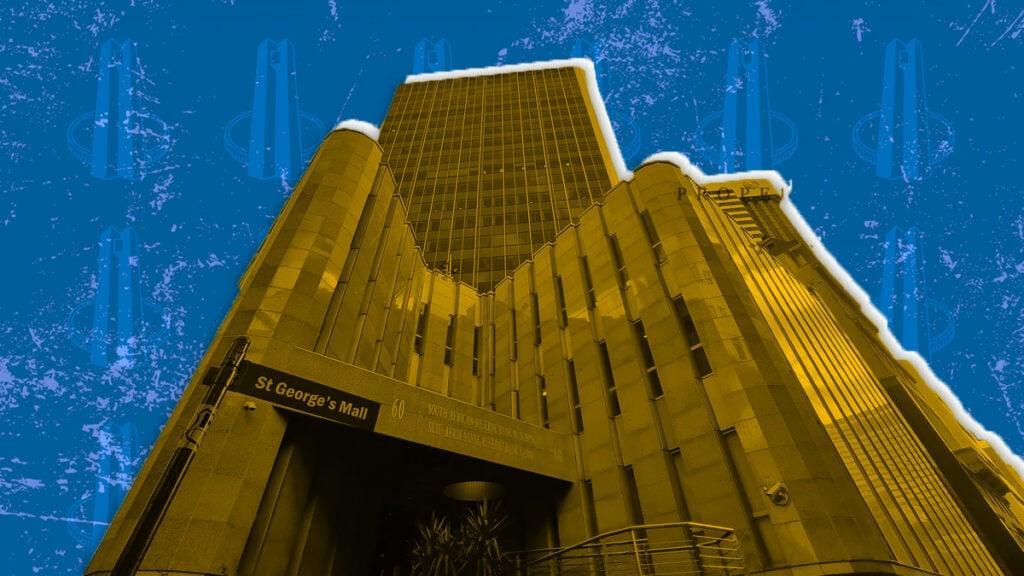Africa-Press – South-Africa. The South African Reserve Bank has R244.9 billion worth of gold stored in its Gold and Foreign Exchange Contingency Reserve Account (GFECRA).
This value has skyrocketed over the past few months as gold prices have continued to rise amid growing global tensions and fears of an economic slowdown.
The Reserve Bank revealed this in its monthly statement outlining its assets and liabilities for the end of April, showing significant growth in its reserves.
Central banks tend to store gold in their reserves to protect the value of the country’s currency. These institutions now hold over 35,000 metric tonnes of the metal, more than a fifth of all gold ever mined.
As gold carries no credit or counterparty risks, it serves as a source of trust in a country and all economic environments, making it one of the most important reserve assets worldwide, alongside government bonds.
Crucially, it tends to have an inverse relationship with currencies, including the US dollar, enabling central banks to protect their reserves during market volatility.
In 1989, the Reserve Bank introduced the GFECRA to manage fluctuations in the value of its gold and foreign exchange accounts.
Any profits and losses on these accounts belong to the government, despite them being reported on in the bank’s financial statements.
For the foreign exchange reserves, the relationship between the Treasury and the SARB is like that between a customer and a bank. The Treasury holds the forex reserves in deposit with the SARB.
This deposit is an asset on the government’s balance sheet and a liability on the Reserve Bank’s.
The complexity arises from these reserves being denominated in US dollars while the Reserve Bank’s balance sheet is consolidated in rands. This makes the gains on these reserves difficult to realise and transfer to the National Treasury.
However, the Treasury has monetised some of the GFECRA to R150 billion to reduce the government’s borrowing requirements, limit the sales of forex reserves, and strengthen the Reserve Bank’s equity position.
In effect, the government used the account as a temporary stopgap to improve its financial health in the short term.
Warning against using the pot of gold
Finance Minister Enoch Godongwana
The strong appreciation of gold prices in recent months has raised the possibility of the National Treasury once again tapping into the GFECRA to prop up state finances.
This is particularly relevant given the intense debate surrounding the implementation of a potential VAT increase to aid government revenue and prevent it from having to increase its borrowing further.
Gold has hovered near record highs for the past month, peaking at $3,354 per ounce on the morning of 17 April 2025.
This is a record run for the precious metal, with its price rising strongly since 2017 as uncertainty rose and Russia’s invasion of Ukraine pushed central banks to diversify their reserves.
In the short term, gold’s sharp uptick has been driven by investors flocking to safe-haven assets after US President Donald Trump unveiled import tariffs into the United States.
The appreciation in the price of the metal has resulted in the value of the Reserve Bank’s holdings surging, potentially giving the government room to monetise some of the GFECRA assets.
However, experts have warned strongly against using the GFECRA regularly and without clear rules for the use of the money generated by selling the assets.
Standard Bank’s head of macroeconomic research in South Africa, Elna Moolman, said the reserves are not a silver bullet for the country’s finances.
In a research note, when the government first unveiled plans to tap the reserves, Moolman said that without significant reductions in spending or economic growth, the use of the reserves will only delay South Africa’s hitting a fiscal cliff.
“Without the spending discipline and growth-lifting reforms that we assume are underway, employing the GFECRA would merely be delaying a fiscal cliff,” Moolman said.
Moolman urged the National Treasury and the Reserve Bank to ensure strict rules define the size of the withdrawal from the account and the use of the funds.
Analysts at Stanlib agreed with Moolman, saying that the use of the funds may even give the government more room to increase spending, the way it is, with less concern about the sustainability of its debt burden.
In other words, the government may avoid making the tough decisions needed to rein in expenditure, causing the spending ceiling to grow further without pressure from high debt levels.
For More News And Analysis About South-Africa Follow Africa-Press






